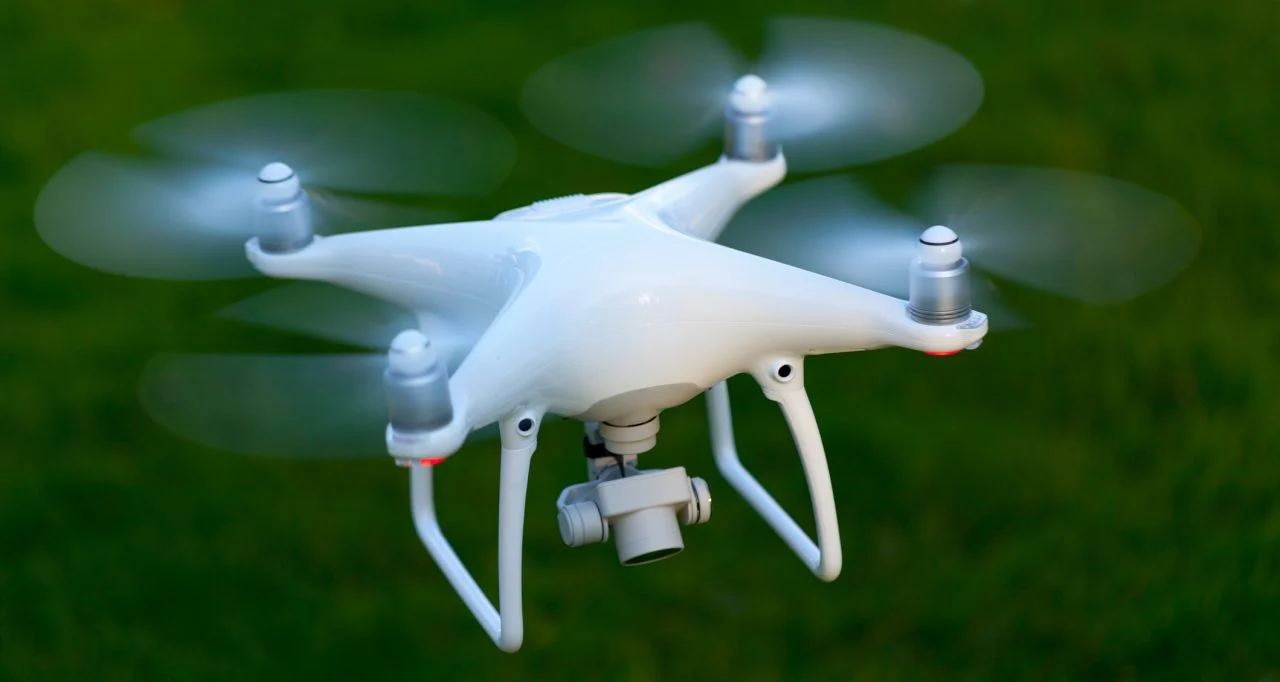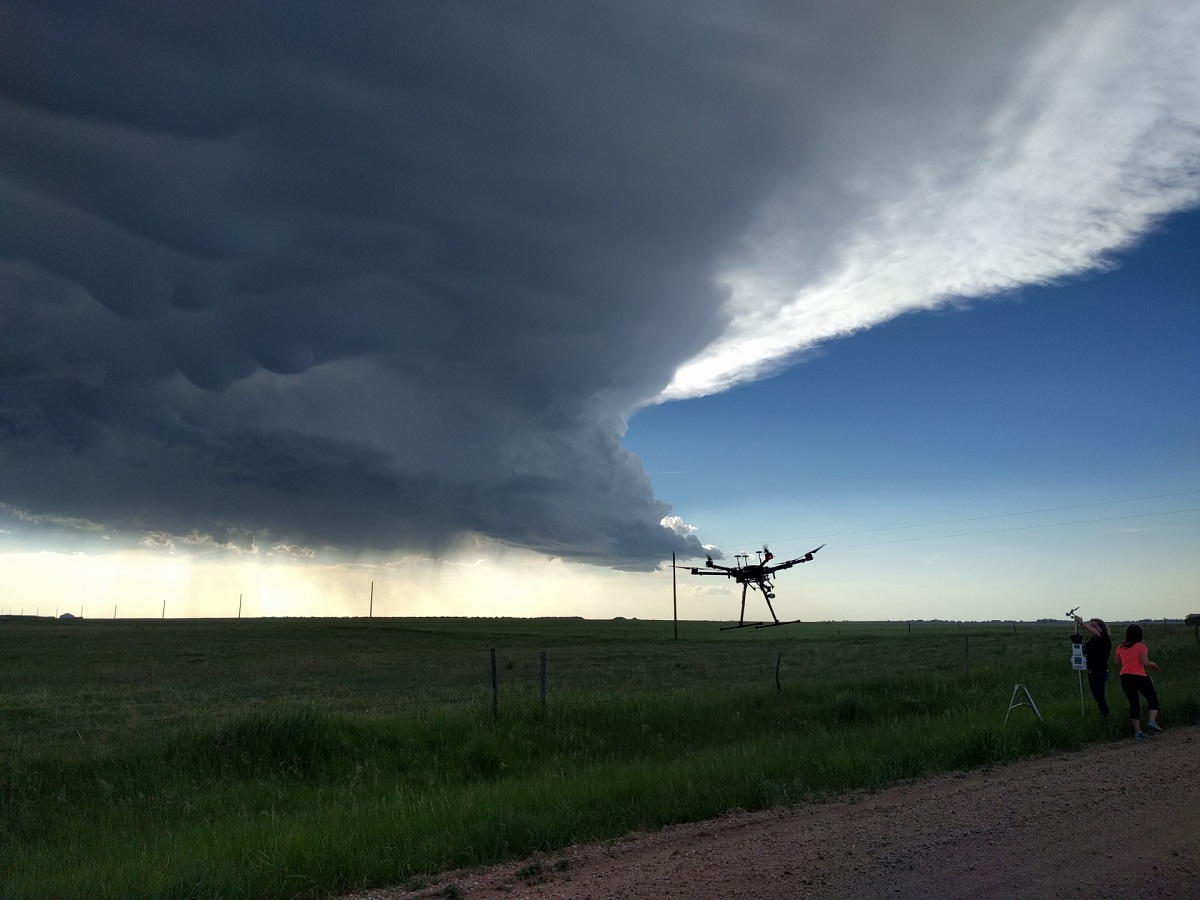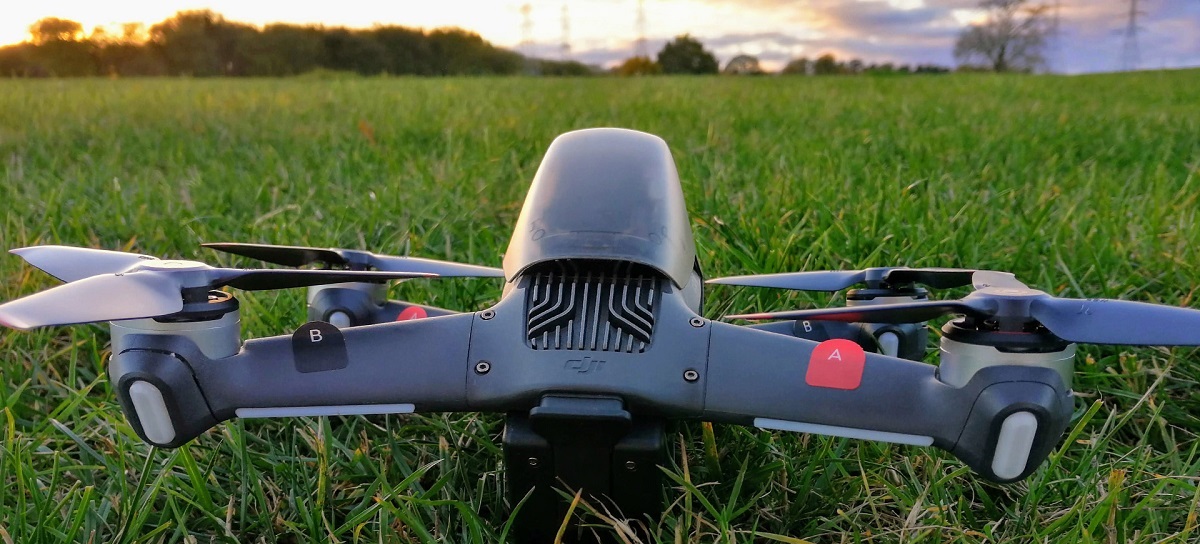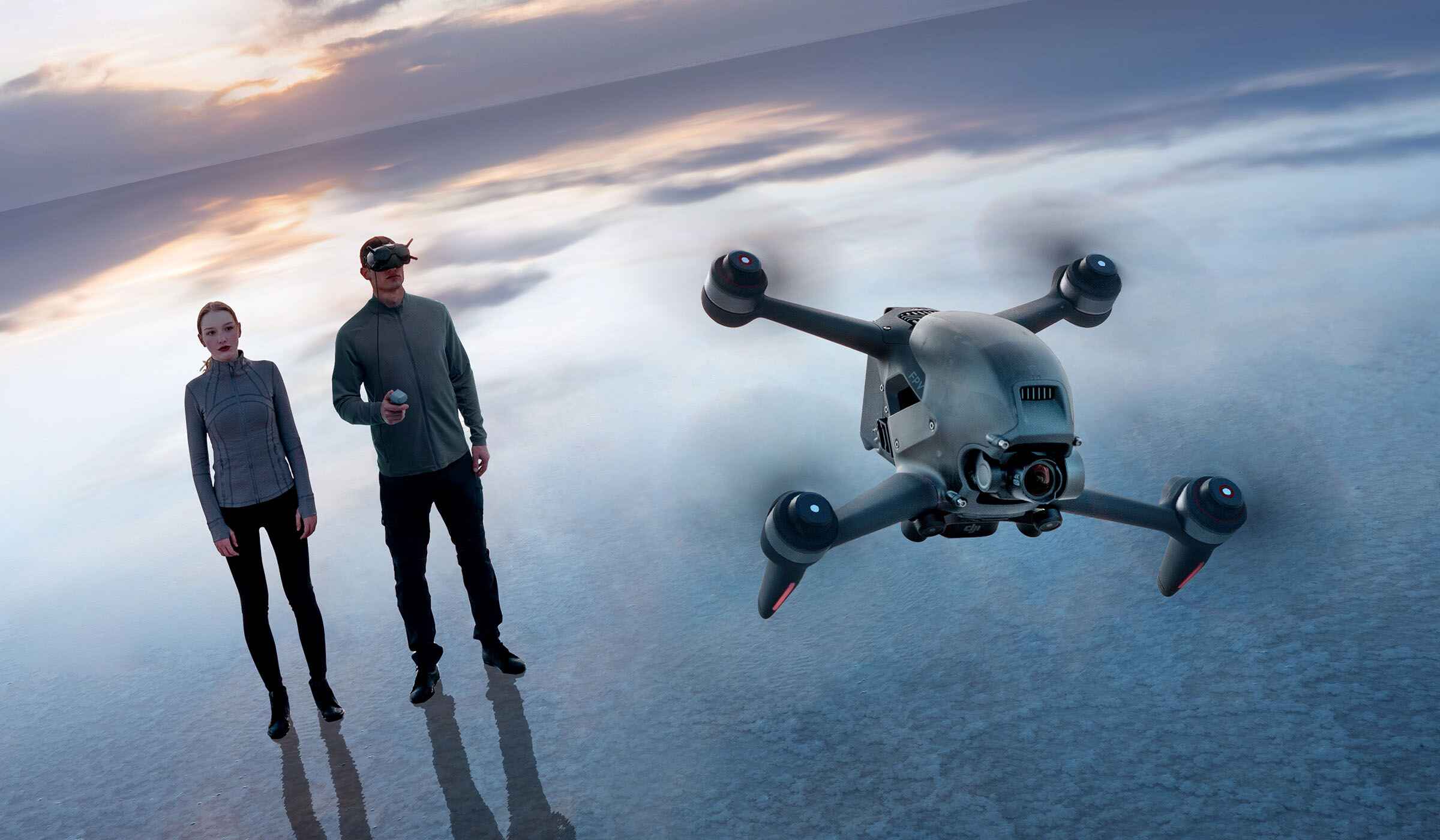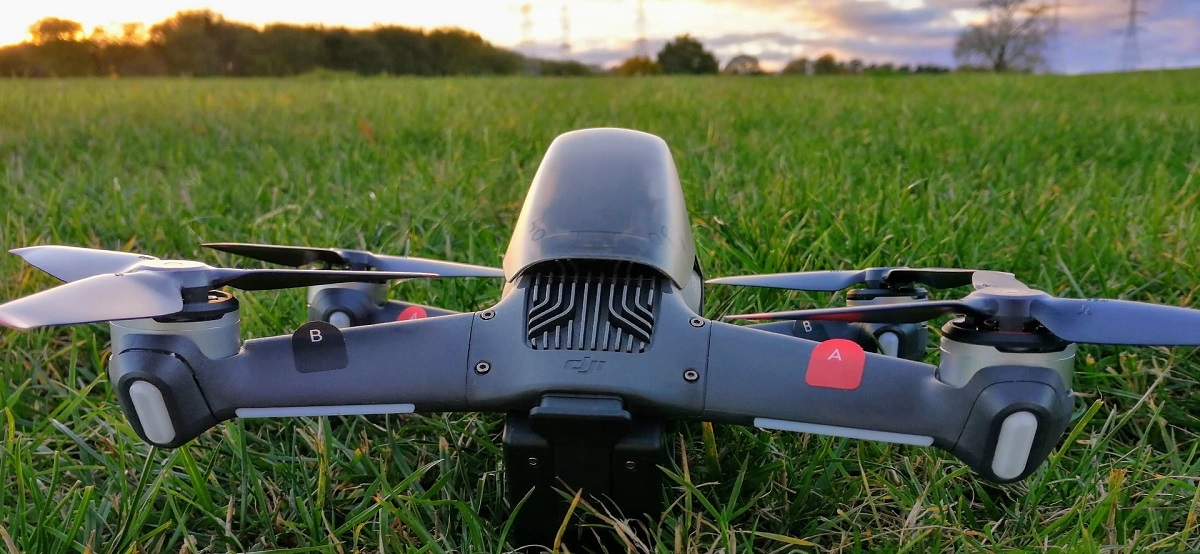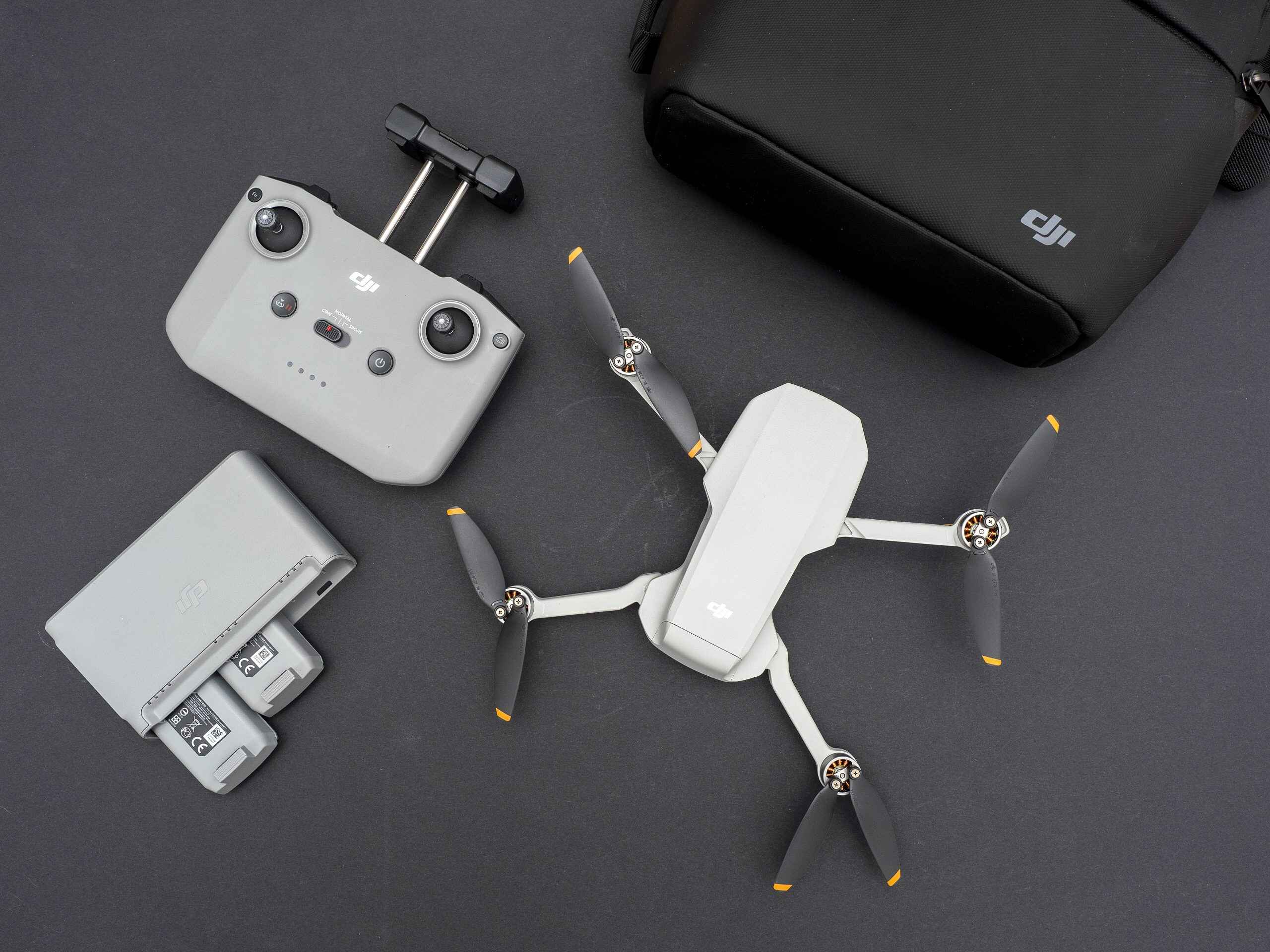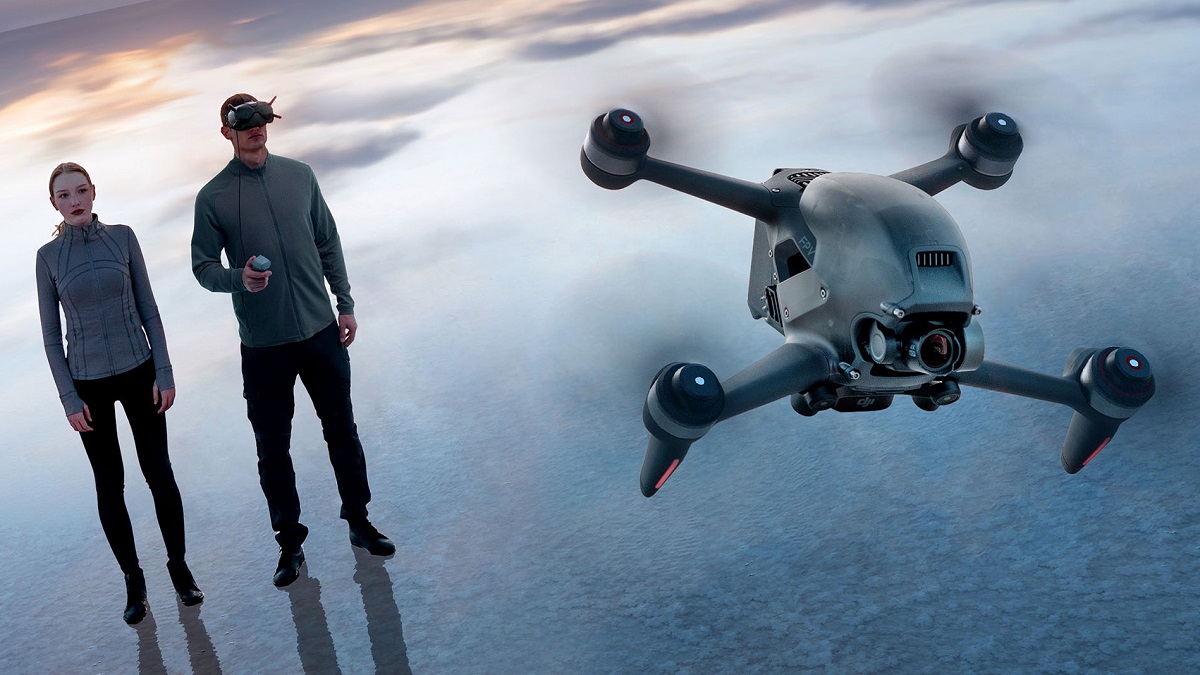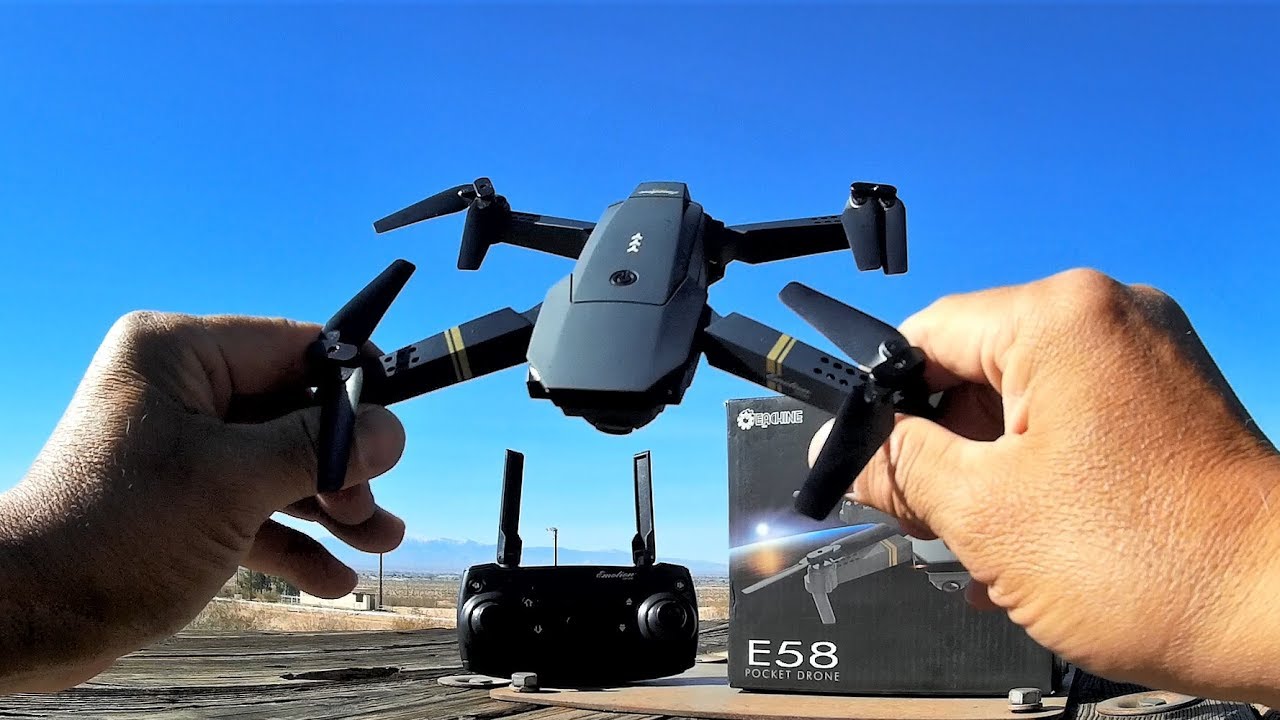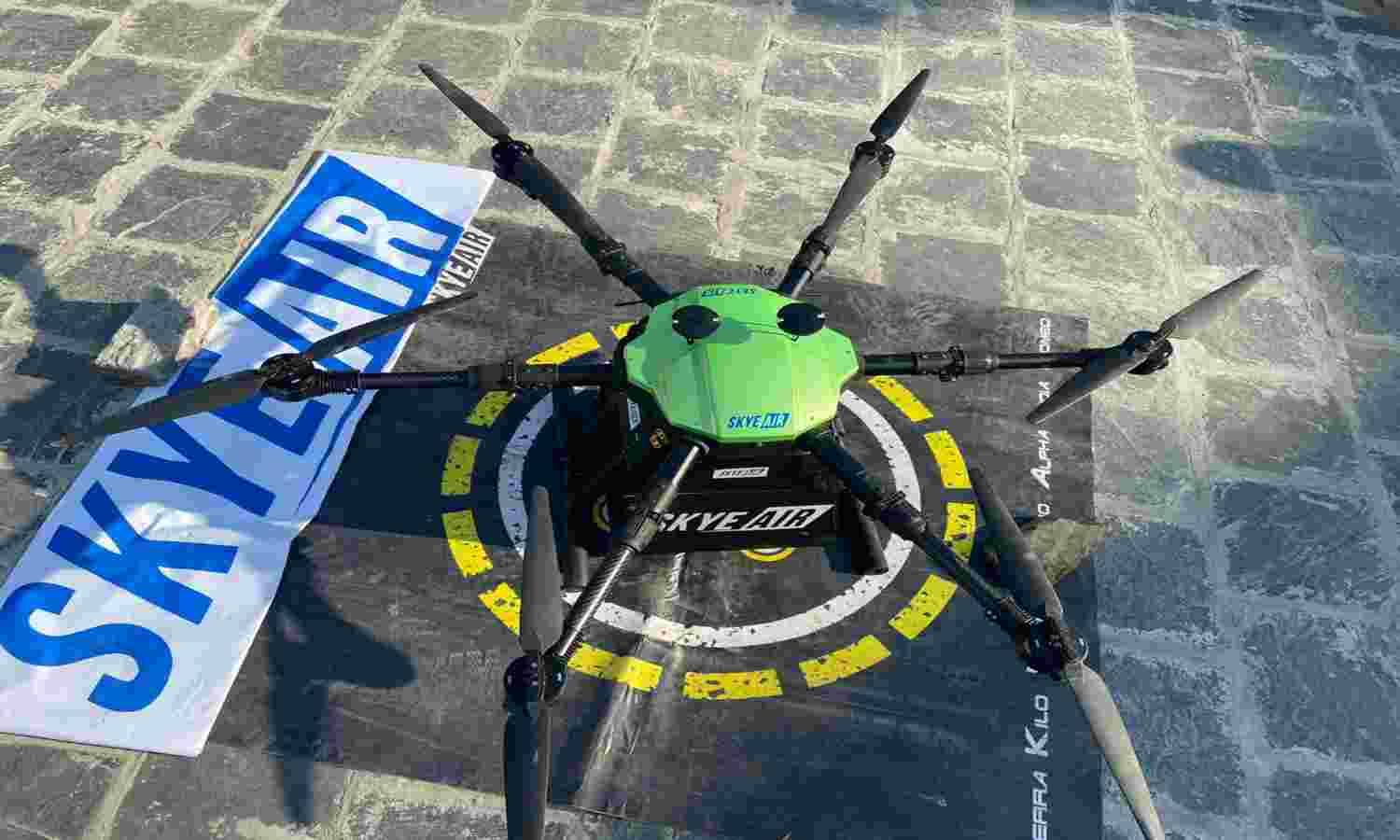Introduction
Welcome to the fascinating world of drones! These unmanned aerial vehicles have soared in popularity over the years, capturing our imagination with their versatility and capabilities. From aerial photography and videography to search and rescue missions, drones have proved to be invaluable tools in various industries. One common question that often arises is: how high can a drone fly?
Understanding the factors that affect drone altitude is crucial for both hobbyist and professional drone operators. While there are legal restrictions in place regarding drone altitude, it’s also important to consider the science behind drone flight and the challenges that come with flying at higher altitudes.
In this article, we will explore the factors that affect drone altitude, the legal restrictions on drone flight, and the altitudes achieved in record-setting drone flights. We will also delve into the science behind drone altitude and the challenges that arise when flying at high altitudes.
Whether you’re a drone enthusiast looking to push the limits of your device’s capabilities or a beginner seeking to understand the fundamentals, this article will provide you with valuable insights on how high a drone can fly.
Factors Affecting Drone Altitude
Several factors contribute to the maximum altitude that a drone can reach. Understanding these factors is essential for safe and successful drone operation.
Battery Life: The battery life of a drone directly affects its ability to maintain altitude. As the battery drains, the drone’s power decreases, resulting in a gradual descent. To maximize altitude, it is crucial to monitor the battery levels and return the drone to a safe altitude before it runs out of power.
Weight and Payload: The weight of a drone and any additional payload it carries can impact its ability to reach higher altitudes. Heavier drones require more power to lift off and maintain altitude. It’s essential to consider the weight of the drone and any accessories or equipment attached to it when determining its maximum altitude.
Aerodynamics: The design and aerodynamics of a drone play a significant role in its ability to reach higher altitudes. Drones with sleek, streamlined designs tend to have less air resistance and can ascend more efficiently. Factors such as the shape and size of the drone’s body, wings, and propellers can affect its overall performance and altitude capabilities.
Atmospheric Conditions: Weather conditions, such as wind speed and temperature, can impact a drone’s ability to maintain altitude. Strong winds can push a drone off course and make it difficult to climb higher. Additionally, colder temperatures can affect battery performance, reducing flight time and maximum altitude.
Drone Model and Specifications: Each drone model has its own specifications and limitations when it comes to altitude. Higher-end drones are often equipped with more powerful motors and advanced flight controllers, allowing them to reach greater heights compared to entry-level models. It’s essential to consult the manufacturer’s specifications and user manual to understand the altitude limitations of your specific drone.
By considering these factors and properly managing them, drone operators can optimize their devices’ altitude capabilities and ensure safe and successful flights.
Legal Restrictions on Drone Altitude
When it comes to operating a drone, there are legal restrictions and guidelines that govern how high a drone can fly in different regions. These regulations are put in place to ensure safety and protect airspace integrity. It’s crucial for drone operators to be aware of and abide by these restrictions to avoid fines and potential accidents.
The specific legal restrictions on drone altitude vary from country to country, and even within regions of the same country. In the United States, for example, the Federal Aviation Administration (FAA) sets the rules for drone operations. According to the FAA’s guidelines, recreational drone operators must keep their drones below 400 feet above ground level.
The 400-feet altitude limit is also common in many other countries, as it ensures that drones do not interfere with manned aircraft or violate restricted airspace. However, it’s important to note that some countries may have different altitude limits for recreational and commercial drone operations.
In addition to altitude restrictions, there are often no-fly zones where drones are prohibited from flying. These areas may include airports, military installations, national parks, and densely populated areas. It’s crucial to research and understand the specific no-fly zones in your region to avoid any legal complications.
It’s worth mentioning that commercial drone operators may have the opportunity to obtain special permits or waivers that allow them to fly drones beyond certain altitude limits for specific purposes. These permits usually require strict adherence to safety and operational protocols.
To ensure compliance with legal restrictions, drone operators should check the regulations set by the aviation authority in their respective country. Staying informed about any updates or changes in the rules is essential, as the drone industry continues to evolve.
By following the legal restrictions on drone altitude, operators can enjoy their drones responsibly while maintaining the safety of both airspace and people on the ground.
Altitude Records for Drones
As drone technology continues to advance, enthusiasts and experts alike have pushed the boundaries of altitude to achieve record-setting flights. These impressive feats demonstrate the incredible capabilities of drones and the ingenuity of their operators.
One notable altitude record for drones was set by a team of engineers from the Karlsruhe Institute of Technology in Germany. In 2017, their drone, named “AtlantikSolar,” reached a staggering altitude of 72,395 feet (22,080 meters), making it the highest altitude ever achieved by a solar-powered drone. This record-breaking flight showcased the potential of renewable energy sources for long-endurance drone missions.
Another notable example is the Perlan Project, an initiative to fly an unpowered glider to the edge of space using atmospheric waves. The project aims to explore the stratosphere and gather scientific data. In 2018, their modified glider reached an altitude of 76,124 feet (23,189 meters) in the skies above Argentina, setting a new record for the highest altitude ever achieved by an engineless aircraft.
It’s important to note that these altitude records are achieved by specialized drones and gliders with advanced technology and specific purposes. They are not the typical altitude range for consumer or hobbyist drones, which have lower altitude limits due to safety and regulatory reasons.
Setting altitude records for drones requires meticulous planning, extensive testing, and adherence to safety protocols. It demonstrates the capabilities of drone technology and drives innovation in the industry. These record-breaking flights inspire future advancements in drone design, propulsion systems, and flight endurance.
While most drone enthusiasts may not aim to break altitude records, these impressive achievements showcase the unlimited potential of drones and their ability to push the boundaries of what is possible in the realm of unmanned aerial vehicles.
The Science Behind Drone Altitude
To understand how drones achieve altitude, it’s important to delve into the science behind their flight dynamics. Drones rely on the principles of aerodynamics, propulsion, and control systems to maintain and adjust their altitude.
Aerodynamics: Drones utilize the same aerodynamic principles as airplanes to generate lift. The shape and design of the drone’s body, wings, and propellers play a crucial role in creating lift and maintaining stable flight. When the propellers rotate, they create an airflow over the wings and body, generating lift that counteracts the force of gravity and allows the drone to ascend.
Propulsion Systems: Drones can have different propulsion systems, such as electric motors or gas engines, to provide the necessary power for flight. The efficiency and power output of these propulsion systems directly affect a drone’s ability to climb to higher altitudes. Advanced propulsion systems with higher thrust capabilities can help drones overcome gravity and climb more efficiently.
Control Systems: Drones are equipped with sophisticated control systems that enable pilots to adjust their altitude accurately. These control systems rely on sensors, such as accelerometers and gyroscopes, to measure the drone’s position, orientation, and altitude. By manipulating the drone’s motor speed, the control system can regulate the thrust and adjust the altitude as per the pilot’s inputs.
Furthermore, drones with GPS capabilities can utilize position information to hold a specific altitude or follow a predetermined flight path. GPS integration allows for more precise altitude control and facilitates autonomous flight capabilities.
Factors such as air density, temperature, and wind conditions can also affect drone performance and altitude. Higher altitudes typically have thinner air and lower air density, reducing the amount of lift generated by the wings and propellers. Cold temperatures can decrease battery performance, limiting the drone’s maximum altitude. Wind speed and direction can impact ascent and descent rates, making it essential for pilots to consider weather conditions before flying at higher altitudes.
Understanding the science behind drone altitude empowers drone operators to make informed decisions and optimize their flights. By taking into account aerodynamics, propulsion systems, control systems, and environmental factors, pilots can safely and effectively control their drones at different altitudes.
Challenges and Risks at High Altitudes
Operating drones at high altitudes presents a unique set of challenges and risks that drone pilots must be aware of. As drones reach higher elevations, they face various obstacles that can affect their performance and pose potential dangers.
Reduced Air Density: As drones ascend to higher altitudes, the air density decreases, which can impact their ability to generate lift. Thinner air means the propellers have less air to push against, reducing the overall thrust and lift produced. This can result in decreased maneuverability and difficulties in maintaining altitude control.
Battery Performance: Cold temperatures at higher altitudes can negatively affect battery performance. Lithium-ion batteries, commonly used in drones, can experience reduced efficiency and shorter flight times, limiting the drone’s operating capabilities. It’s crucial for pilots to consider temperature conditions and monitor battery levels carefully to ensure a safe flight and to prevent unexpected power loss.
Wind Conditions: Wind speed and direction become more significant at higher altitudes. Strong winds can push drones off course and make it challenging to maintain stable flight. Drone stability and control may be compromised in turbulent conditions, potentially leading to crashes or loss of control. Pilots should regularly check weather forecasts and be cautious of windy conditions when flying at high altitudes.
GPS Signal Interference: Operating drones at high altitudes can increase the risk of GPS signal interference. Tall structures or mountainous terrains can obstruct satellite signals, leading to weaker or intermittent GPS reception. This can impact the drone’s positioning accuracy, autonomous flight capabilities, and overall control. Pilots should be cautious when relying heavily on GPS functions in areas with potential signal blockages.
Air Traffic: As drones reach higher altitudes, they come closer to the airspace used by manned aircraft. This raises the risk of potential collisions and interference with manned flights. It is crucial for drone pilots to adhere to local regulations, maintain proper situational awareness, and always yield the right-of-way to manned aircraft to ensure safe coexistence in the airspace.
Understanding the challenges and risks associated with high-altitude drone flights is essential for safe and successful operations. Pilots should carefully assess conditions, plan flights accordingly, and exercise caution to mitigate potential risks and ensure a rewarding and incident-free experience.
How High Can Consumer Drones Typically Fly?
The maximum altitude that consumer drones can reach varies depending on several factors, including the drone’s design, specifications, and regulatory restrictions. In general, most consumer drones have altitude limits set to ensure safe operations and comply with aviation regulations.
For recreational drone operators, the maximum altitude limit is often set around 400 feet above ground level (AGL). This restriction is in place to maintain separation between drones and manned aircraft, ensuring safety and minimizing the risk of collisions. The 400-feet limit provides ample altitude for capturing stunning aerial photos and videos while keeping drones within a reasonable range for visual line-of-sight operation.
It’s important to note that some consumer drones may have altitude restrictions built into their firmware or flight control systems, even if the regulatory limit allows for higher altitudes. Manufacturers implement these restrictions to prevent inexperienced pilots from pushing their drones beyond safe operational limits.
Commercial-grade drones, used for professional aerial photography, videography, and surveying, often have higher altitude capabilities. These drones are designed with more powerful motors, advanced flight control systems, and built-in safety features. Depending on the model, commercial drones can typically reach altitudes of 500 to 1,500 feet AGL or even higher, allowing for more expansive aerial perspectives in various industries.
It’s essential for drone operators to be familiar with the altitude capabilities of their specific drone model. Manufacturers provide detailed specifications and guidelines in the user manual, including altitude restrictions and recommended flight altitudes.
While it can be tempting to push the limits and fly drones as high as they can go, it’s important to prioritize safety and comply with regulatory restrictions. Flying too high can increase the risk of losing control, interfering with other aircraft, or even violating aviation regulations, which can lead to legal consequences.
Understanding and respecting the altitude limitations of consumer drones is essential for safe and responsible drone operations, ensuring a positive experience for both pilots and the general public.
How to Safely Fly Your Drone at High Altitudes
Flying a drone at high altitudes can be an exhilarating experience, but it also requires a responsible and cautious approach to ensure safety. Here are some essential tips for safely flying your drone at higher altitudes:
1. Know the regulations: Familiarize yourself with the local regulations governing drone flights, including altitude restrictions and any other specific requirements for high-altitude operations. Ensure compliance with these regulations to avoid legal issues and promote safety.
2. Understand your drone’s limitations: Read the user manual and familiarize yourself with the specifications and altitude limitations of your drone. Operating your drone within its prescribed altitude range will help prevent potential issues and ensure optimal performance.
3. Check the weather conditions: Assess the weather conditions before flying at high altitudes. Strong winds or adverse weather conditions can affect the stability and control of the drone. Avoid flying in inclement weather, and always prioritize safety.
4. Monitor battery levels: Keep a close eye on your drone’s battery levels during high-altitude flights. Cold temperatures can decrease battery performance, resulting in shorter flight times and potential power loss. Plan accordingly and ensure sufficient battery capacity for a safe return to the ground.
5. Maintain visual line-of-sight: Even at high altitudes, it’s crucial to maintain visual contact with your drone. Losing sight of your drone can lead to decreased situational awareness and potential collisions with obstacles or other aircraft. Keep a clear line of sight and use binoculars if needed for better visibility.
6. Rely on GPS with caution: If your drone has GPS capabilities, use them as a tool for position control at high altitudes. However, be aware that GPS signals can be weakened or interrupted in certain areas, leading to decreased accuracy. Be prepared to switch to manual control if necessary.
7. Avoid no-fly zones: Pay attention to restricted areas and no-fly zones, especially at higher altitudes near airports, military installations, or other sensitive areas. Respect the boundaries set for drone operations to ensure the safety of others and avoid legal consequences.
8. Be mindful of other aircraft: When flying at higher altitudes near airspace used by manned aircraft, always keep an eye out for other aircraft and yield the right-of-way. Maintain a safe distance and altitude separation to avoid potential collisions or interference.
By following these guidelines, drone operators can enjoy the thrill of flying at high altitudes while prioritizing safety and responsible drone operations.
Summary
Understanding the factors that affect drone altitude, the legal restrictions, and the science behind drone flight provides valuable insights for drone enthusiasts and operators. Factors such as battery life, weight and payload, aerodynamics, atmospheric conditions, and drone specifications all play a role in determining the maximum altitude a drone can reach.
It’s essential for drone operators to be aware of and comply with legal restrictions on drone altitude to ensure safe operations and prevent any potential violations. Adhering to altitude limits set by aviation authorities helps maintain airspace integrity and mitigate the risk of collisions with manned aircraft.
Altitude records for drones highlight the extraordinary capabilities of specialized drones and inspire innovation in the field. From solar-powered drones reaching impressive heights to gliders pushing the boundaries of engineless flight, these achievements showcase the potential of unmanned aerial vehicles.
At higher altitudes, drones face unique challenges and risks, including reduced air density, battery performance issues, wind conditions, GPS signal interference, and the potential for airspace conflicts. Understanding and mitigating these challenges is crucial for safe operations at high altitudes.
Consumer drones typically have altitude limits set by manufacturers and regulatory authorities. Knowing the altitude limitations of your specific drone model is essential for safe and responsible operation. By respecting these limitations and flying within legal and safety boundaries, drone pilots can enjoy a rewarding and incident-free experience.
When flying at high altitudes, it’s important to follow safety guidelines, including understanding local regulations, monitoring weather conditions, maintaining visual line-of-sight, being mindful of battery levels, and respecting no-fly zones. By following these guidelines, drone pilots can ensure their high-altitude flights are safe, enjoyable, and in compliance with regulations.
In conclusion, understanding the factors influencing drone altitude, the legal restrictions, the science behind drone flight, and implementing safety precautions are all crucial for safe and successful high-altitude drone operations. With proper knowledge and responsible practices, drone enthusiasts can explore the heights and capabilities of their drones while maintaining safety and compliance.







